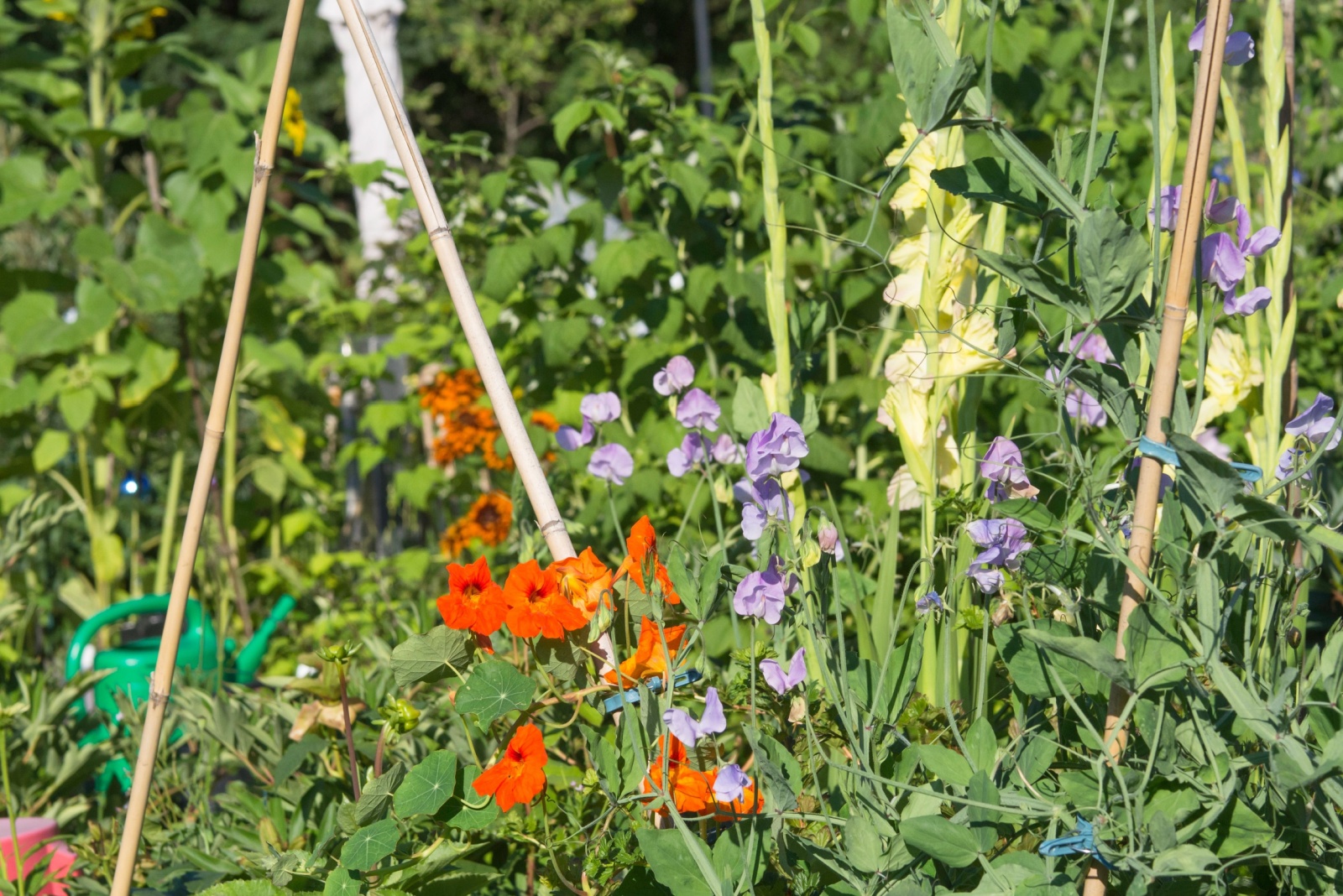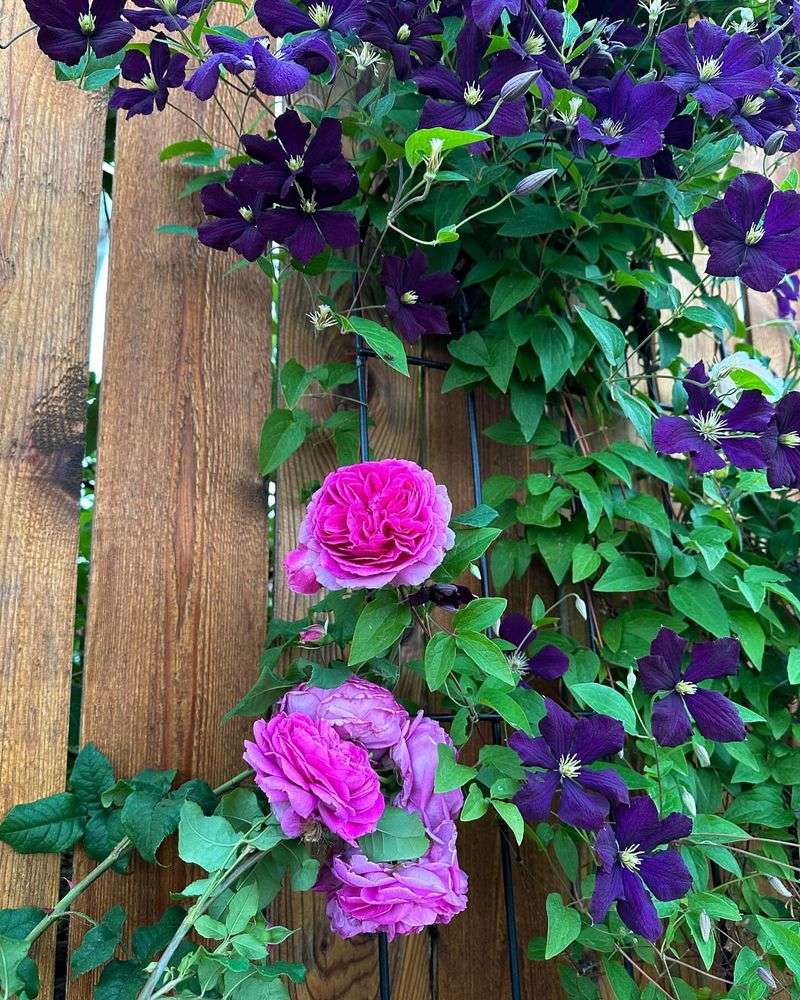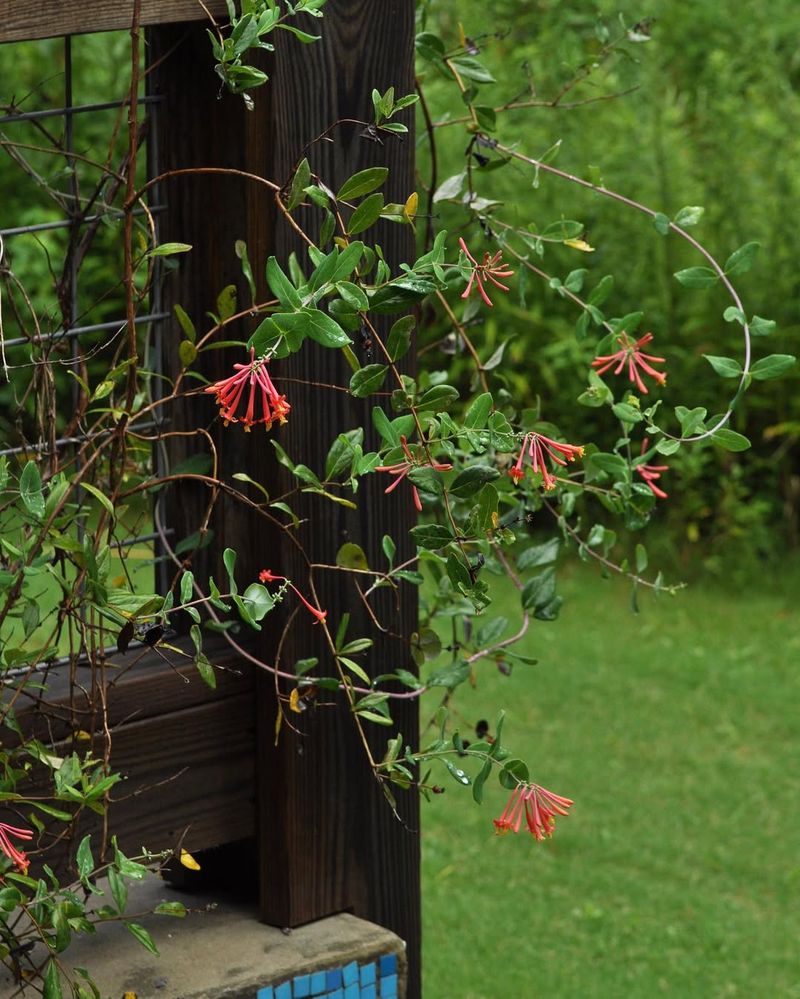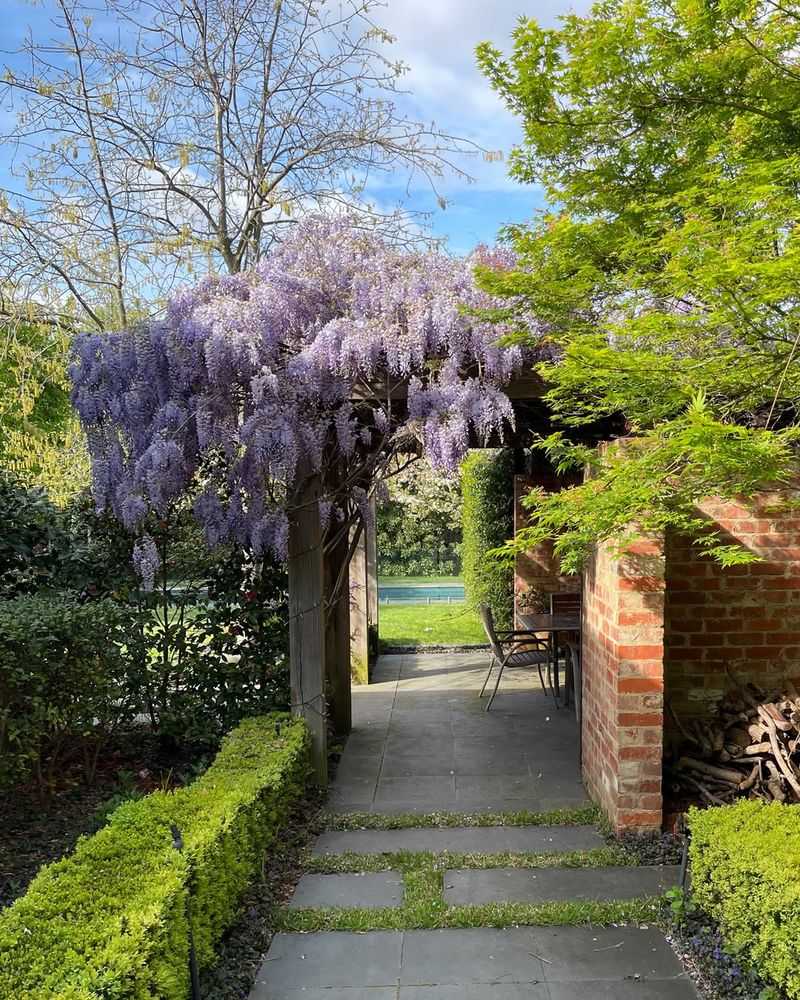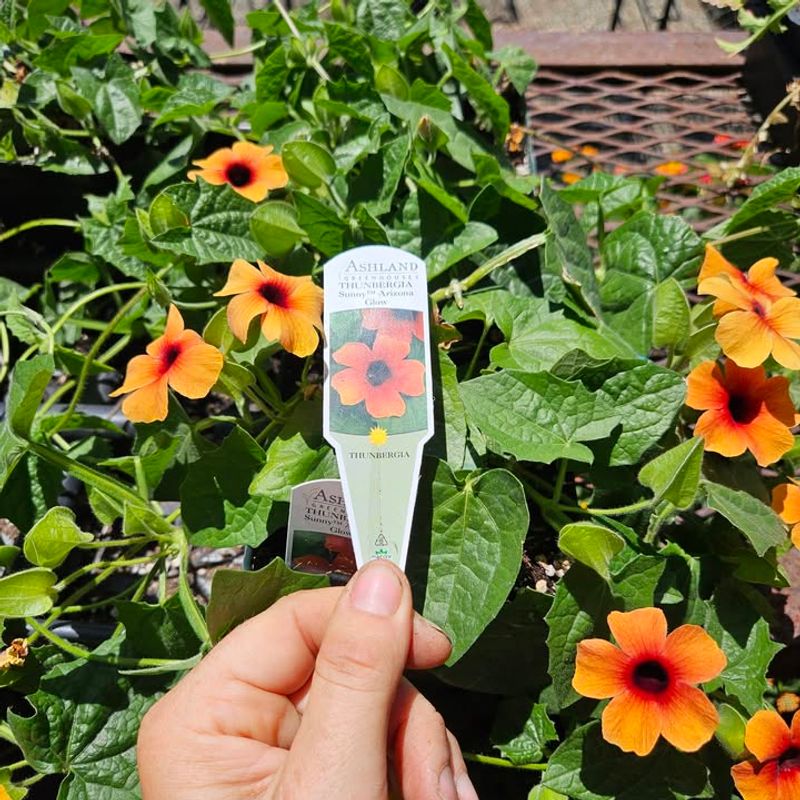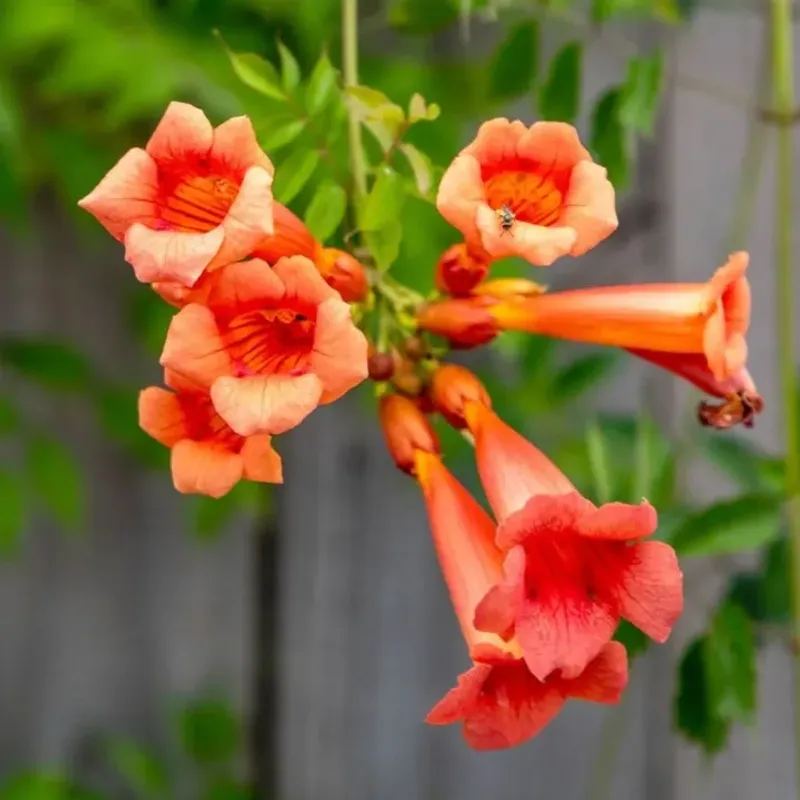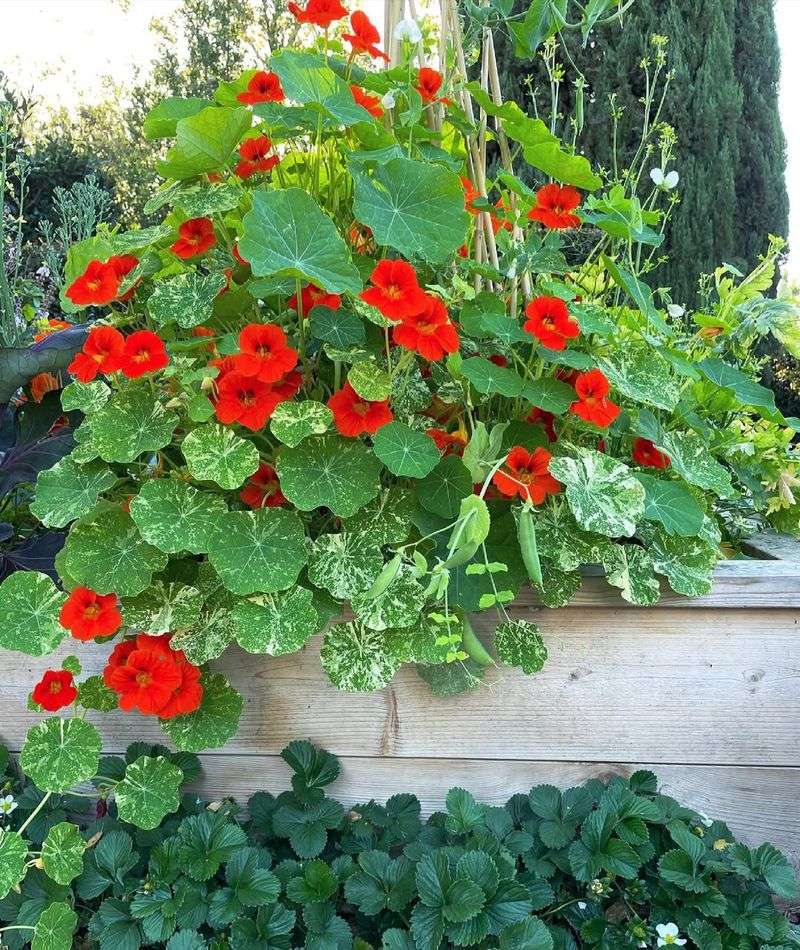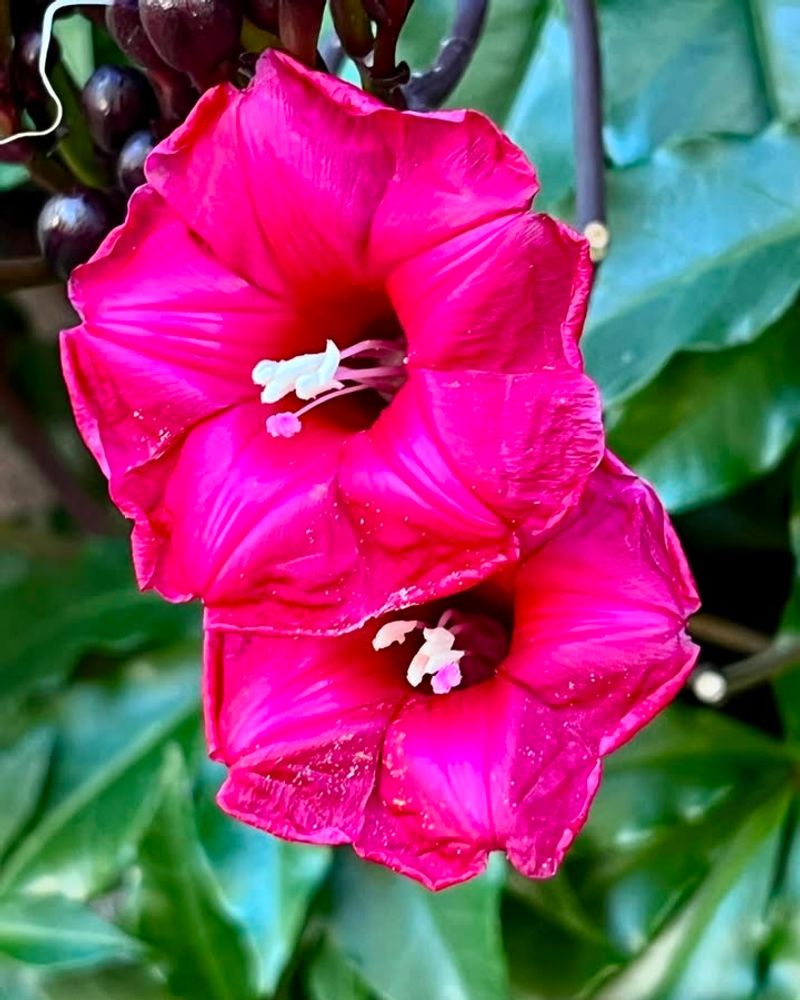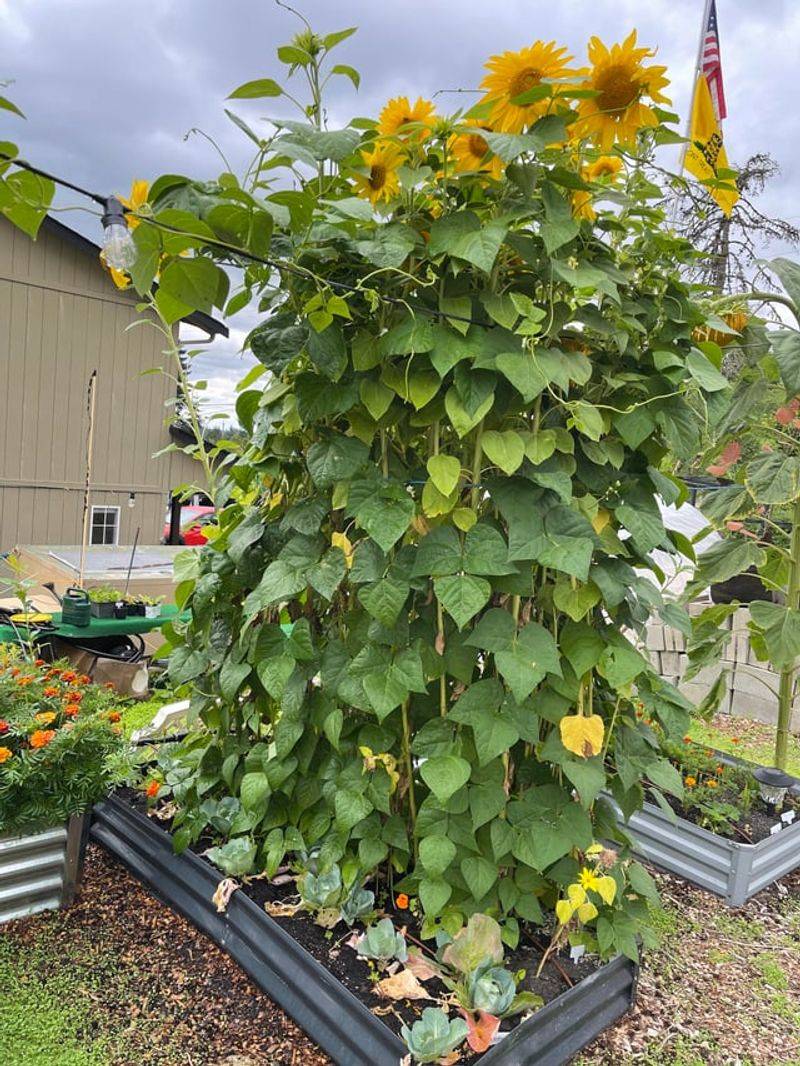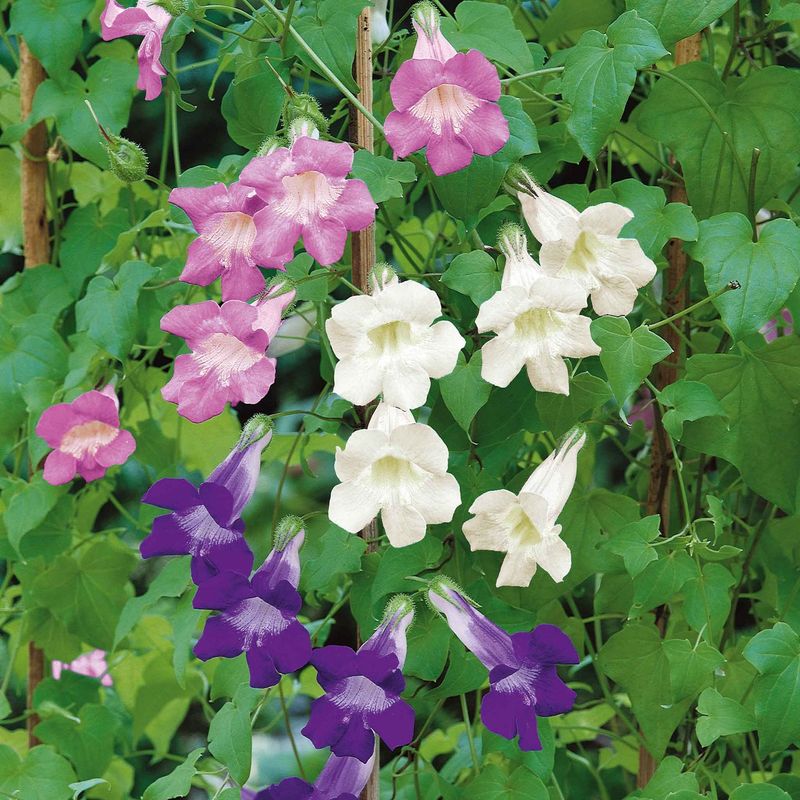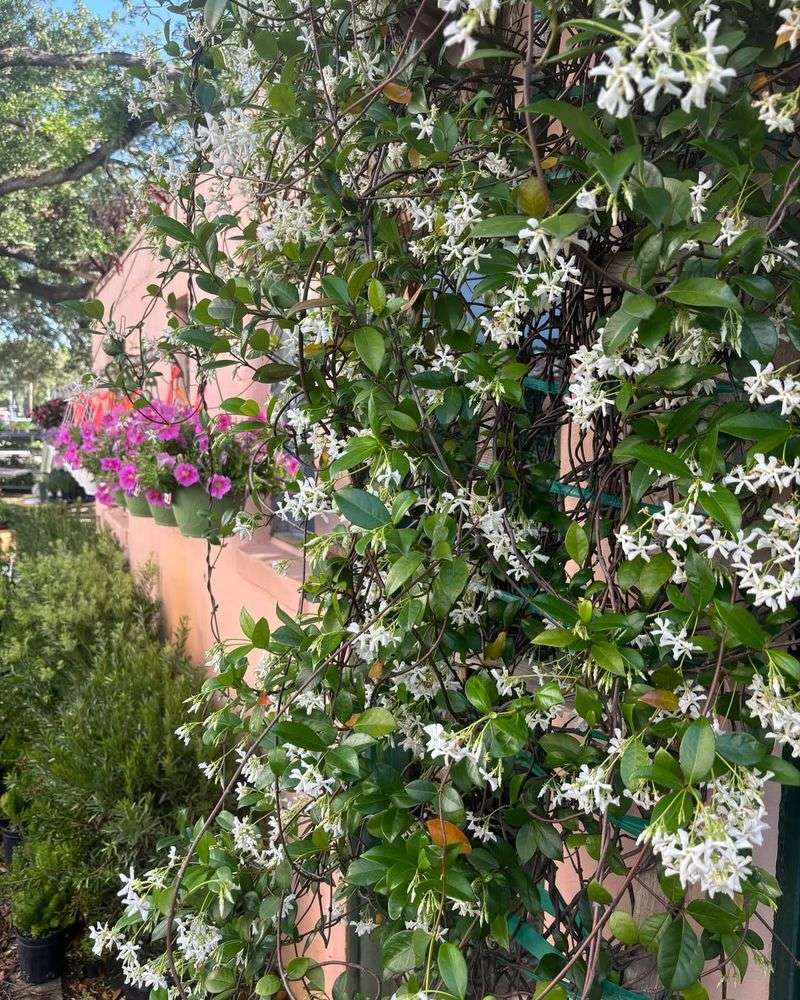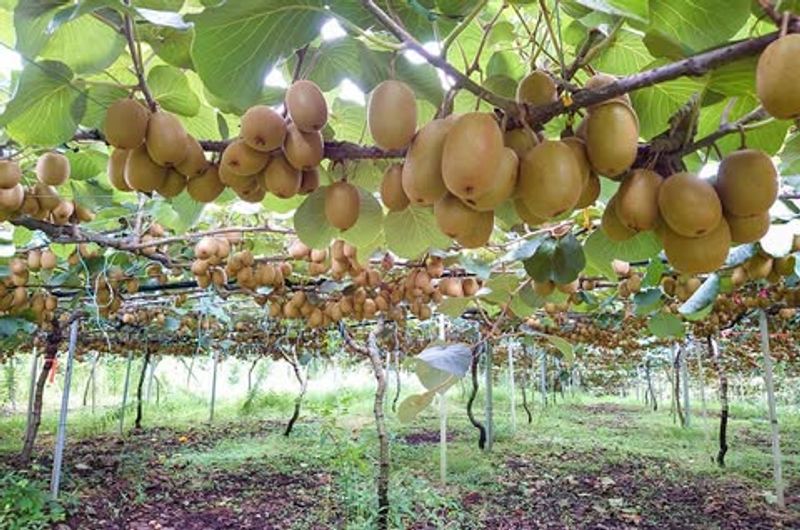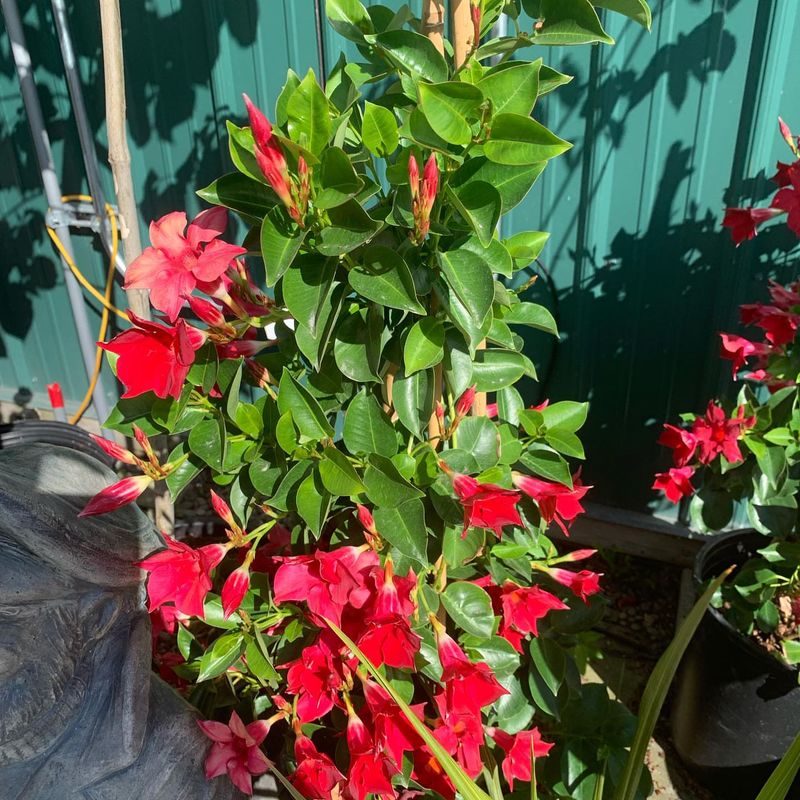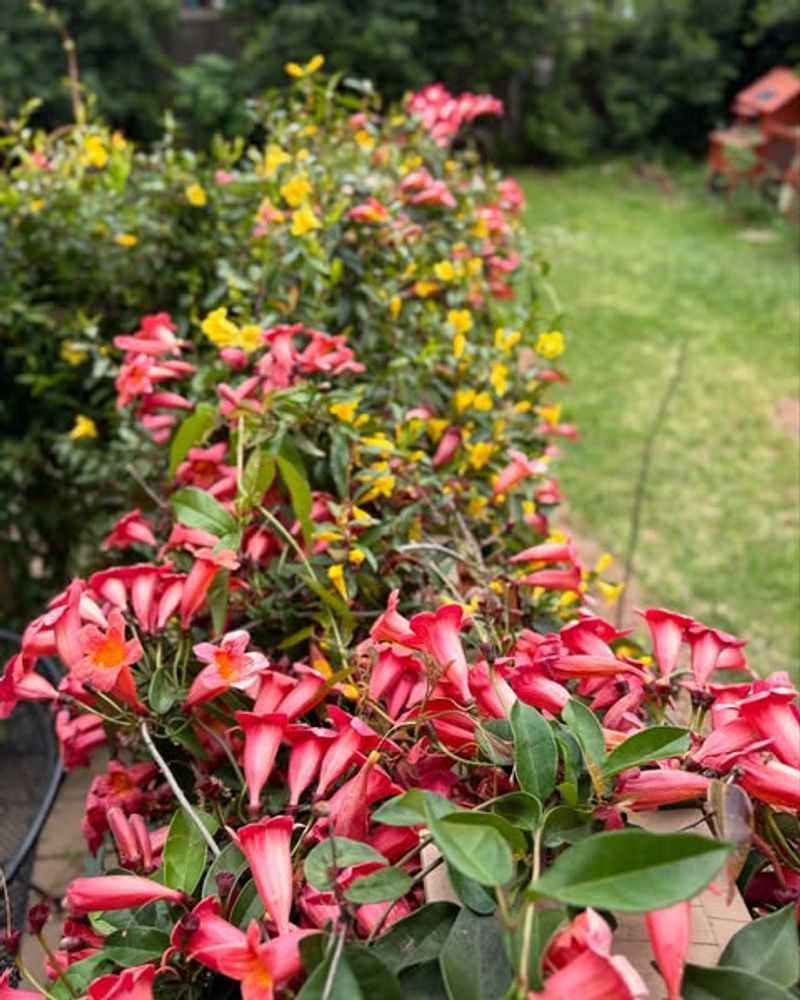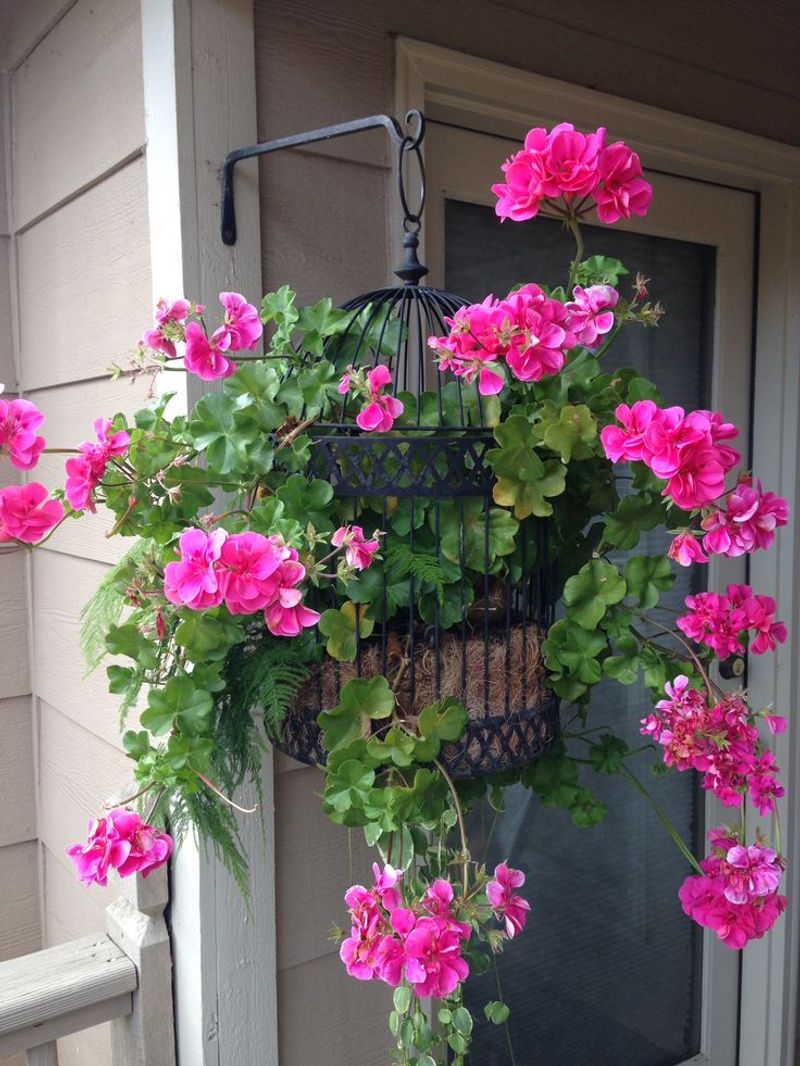Virginia gardens offer a unique opportunity to grow stunning climbing plants that thrive in the state’s humid subtropical climate. Pairing different climbers together creates visual interest, extends blooming seasons, and maximizes vertical space in your garden.
Whether you have a trellis, arbor, or fence, these perfect plant pairings will transform your outdoor space into a colorful, textured paradise that neighbors will admire all season long.
1. Clematis And Climbing Roses
Purple clematis vines weaving through fragrant rose canes create one of the most romantic garden combinations imaginable. Both plants love Virginia’s warm summers and can share the same support structure without competing too aggressively.
Clematis blooms fill gaps between rose flowers, extending color throughout the growing season. Choose a late-blooming clematis variety to complement early summer roses.
Plant clematis roots in shade while letting vines climb toward sunlight where roses flourish.
2. Honeysuckle And Virginia Creeper
Native coral honeysuckle produces tubular red-orange blooms that hummingbirds absolutely adore during summer months. Virginia creeper adds lush green foliage that transforms into brilliant scarlet come autumn.
Both species are native to Virginia, making them incredibly low-maintenance and perfectly adapted to local weather patterns. They naturally resist pests and diseases common in the region.
This pairing works beautifully on fences, creating a wildlife-friendly habitat while providing year-round visual appeal.
3. Wisteria And Climbing Hydrangea
Wisteria’s dramatic purple flower clusters steal the show in late spring, while climbing hydrangea takes over with white lacecap blooms in early summer. Together, they create a succession of flowering that keeps your arbor interesting for months.
Both plants develop woody stems that need sturdy support structures to handle their mature weight. Give them patience, as climbing hydrangea can take several years to establish.
Prune wisteria regularly to prevent it from overwhelming its companion.
4. Morning Glory And Black-Eyed Susan Vine
Bright blue morning glories open with the sunrise while orange black-eyed Susan vines provide contrasting warm tones throughout the day. Both annual vines grow quickly from seed, making them budget-friendly options for gardeners.
Plant them together in late spring after frost danger passes. They’ll rapidly cover trellises, creating a cottage garden feel within weeks.
Their complementary colors create stunning visual impact without requiring years of establishment time like perennial climbers demand.
5. Trumpet Vine And Passionflower
Trumpet vine’s fiery orange blooms attract hummingbirds from miles around during hot Virginia summers. Passionflower adds intricate, alien-looking purple flowers that fascinate both gardeners and beneficial insects alike.
Both vigorous growers thrive in full sun and tolerate Virginia’s humidity without developing fungal problems. Trumpet vine can become invasive, so plant it where spreading won’t cause issues.
Passionflower may produce edible fruits in warm years, adding an unexpected bonus to this dynamic pairing.
6. Sweet Pea And Nasturtium
Sweet peas offer delicate pastel blooms with heavenly fragrance that perfumes spring gardens beautifully. Nasturtiums provide bold orange and yellow flowers plus edible leaves with peppery flavor.
Plant sweet peas in early spring for cool-season blooms, then let nasturtiums take over as temperatures rise. Both prefer different growing conditions but can share vertical space effectively.
Nasturtiums naturally repel aphids that might otherwise attack sweet peas, making them functional companions beyond their aesthetic appeal.
7. Moonflower And Cardinal Climber
Moonflowers unfurl their enormous white blooms at dusk, releasing intoxicating fragrance that fills evening gardens with magic. Cardinal climbers display tiny scarlet star-shaped flowers throughout daylight hours.
Together, they ensure your trellis looks spectacular around the clock during summer months. Moonflowers glow almost luminously under moonlight or landscape lighting.
Both vines grow from seed and prefer warm Virginia summers. Hummingbirds visit cardinal climbers during the day while moths pollinate moonflowers after dark.
8. Climbing Beans And Sunflowers
Sunflowers provide natural living trellises for climbing bean varieties in a technique borrowed from Native American three sisters gardening. Beans fix nitrogen in soil, actually improving growing conditions for their sunflower supports.
Plant sunflowers first, waiting until they reach several feet tall before adding bean seeds around their bases. Choose tall sunflower varieties that can handle bean weight.
You’ll harvest both edible beans and cheerful sunflower heads from the same garden space efficiently.
9. Climbing Snapdragon And Sweet Alyssum
Climbing snapdragons produce vibrant flower spikes in jewel tones that stand upright on their vines beautifully. Sweet alyssum cascades downward with tiny white blooms that smell like honey on warm afternoons.
This combination works wonderfully in containers placed against walls or trellises where height variations create dimension. Snapdragons prefer cooler weather while alyssum tolerates heat better.
Together they extend blooming periods from spring through fall. Deadhead snapdragons regularly to encourage continuous flowering throughout the season.
10. Jasmine And Confederate Jasmine
True jasmine and confederate jasmine aren’t actually related, but their similar white flowers and intoxicating fragrances make them perfect companions. Both evergreen vines provide year-round foliage in Virginia’s milder winter zones.
Confederate jasmine blooms slightly earlier in spring, followed by true jasmine’s summer flowers. Together they extend fragrant blooming periods considerably.
Plant them near patios or windows where their perfume can be appreciated fully. Both handle Virginia’s humidity without developing mildew problems.
11. Grape Vines And Kiwi Vines
Combining edible grape and hardy kiwi vines transforms pergolas into productive garden features that provide both shade and food. Grapes ripen in late summer while kiwis mature in autumn, staggering harvest times.
Both require strong support structures since mature vines become quite heavy when laden with fruit. Hardy kiwi varieties tolerate Virginia winters better than fuzzy supermarket types.
Prune both vines during dormant winter months to maintain productivity. You’ll need male and female kiwi plants for fruit production.
12. Bougainvillea And Mandevilla
Bougainvillea’s papery bracts in magenta, orange, or purple create tropical flair in Virginia’s warmest microclimates. Mandevilla adds glossy leaves and trumpet-shaped flowers in complementary shades.
Both tropical vines must be grown in containers that can move indoors before frost arrives. Place them in the sunniest, hottest spots during summer for best flowering performance.
Their drought tolerance makes them forgiving if you occasionally forget watering. Feed regularly with bloom-boosting fertilizer to maintain their spectacular flower production.
13. Crossvine And Carolina Jessamine
Crossvine displays orange-red tubular flowers in spring that hummingbirds find irresistible during migration season. Carolina jessamine contributes masses of fragrant yellow blooms around the same time.
Both southeastern native evergreen vines handle Virginia’s climate extremes without complaint. Their overlapping bloom times create spectacular spring color combinations.
Carolina jessamine contains toxic compounds, so avoid planting where children or pets might chew foliage. Crossvine’s burgundy winter foliage adds cold-season interest beyond flowering periods.
14. Climbing Fuchsia And Ivy Geranium
Climbing fuchsias dangle elegant two-toned flowers like tiny ballerinas from their vines in shaded locations. Ivy geraniums contribute masses of blooms in reds, pinks, or whites that cascade beautifully.
Both prefer Virginia’s cooler microclimates and appreciate afternoon shade during intense summer heat. They work wonderfully in hanging baskets or containers placed on shaded porches.
Keep soil consistently moist since neither tolerates drought well. Deadheading spent blooms encourages both plants to produce flowers continuously throughout the growing season.

